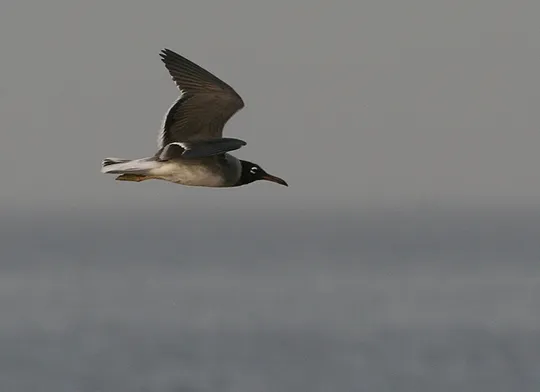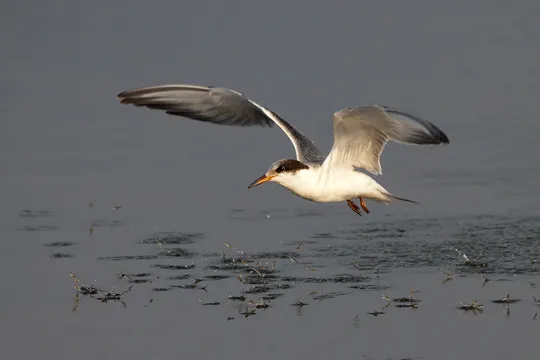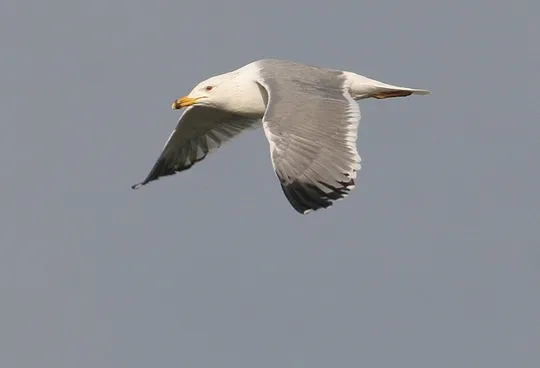Chlidonias niger
 Regionally Extinct
Regionally Extinct
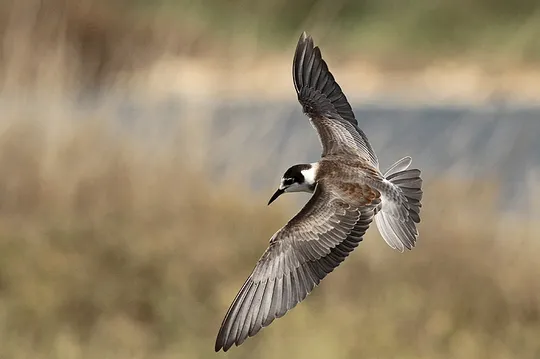
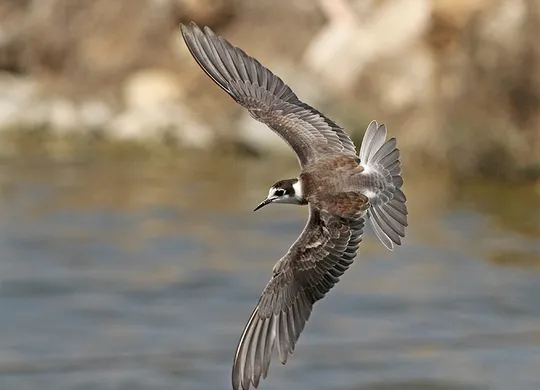
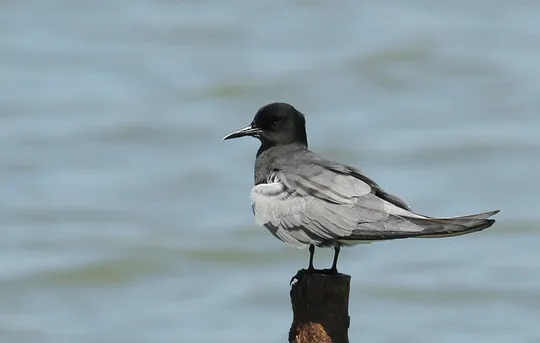
| Habitats | Wetland Thickets |
|---|---|
| Presence In Israel | Migrant, Summer |
| Breeding In Israel | Bred in the past |
| Migration Types | Long Range |
| Zoographical Zones | Mediterranean |
| Landscape Types | Wetlands, Fresh Water, Marsh |
| Vegetation Types | Marsh and Riparian |
| Vegetation Densities | Low |
| Nest Locations | Wetland Thickets |
| Diet Types | Invertebrate, Fish |
| Foraging Grounds | Water |
| Body Sizes | Small (up to 500g) |
| Threat Factors | Wetland Drainage & Pollution |
The Black Tern is a relatively small, delicate tern. Like most marsh terns, its flight is nimble and lively, and it frequently collects small insects over the water. Summer plumage is almost completely black. It has long narrow wings, a short tail and a narrow, delicate bill.
The Black Tern is a relatively rare passage migrant, more common in spring (a few tens) and an extremely rare non-breeding summer visitor in the Northern Valleys. Formerly nested in the Hula Valley; about 20 pairs nested on the northern shores of the Hula Lake until 1956. Breeding ceased subsequent to the drainage of the lake (Paz 1986, Shirihai 1996).
The Black Tern breeds in marshes, lakes and ponds surrounded by thickets of submersed and floating vegetation. The nest is built on floating vegetation or on the ground near the water.
No efforts have been made to restore the Black Tern as a breeder to Israel. The probability of the species returning to breed without specific restoration efforts is low, as there are no large water bodies with submersed and floating vegetation thickets.
The Black Tern became extinct as a breeder in Israel during the drainage of the Hula Lake, in the 1950s. The probability of the species returning to nest in Israel naturally is estimated to be low.
The Black Tern has a broad Holarctic range. It inhabits shallow, clear inland water bodies. It feeds mainly on small fish and a variety of aquatic invertebrates. Most of its populations are migratory.
- פז, ע. 1986. עופות. מתוך אלון, ע. (עורך), החי והצומח של ארץ ישראל. כרך 6. הוצאת משרד הביטחון, ישראל.
- Shirihai, H., 1996. The Birds of Israel. Academic Press, London.
- Symes, A. 2013. Species generation lengths. Unpublished, BirdLife International.
- Species page at Birdlife International
Distribution maps
The maps presented here provide visual information on the distribution of species in Israel from the past and present, and the changes in occupancy and breeding density during the comparison period. For further reading
Relative Abundance 2010-2020
Breeding density values in the current decade as determined from experts' opinion and observations from databases.
| Data Missing | Sporadic | Limited Sites | Low Density | High Density |
|---|---|---|---|---|
| 8 | 12 | 12 | 21 | 19 |
Relative Abundance 1980-1990
Density values based primarily on the book The Birds of Israel (Shirihai 1996).
| Data Missing | Sporadic | Limited Sites | Low Density | High Density |
|---|---|---|---|---|
| 5 | 14 | 14 | 17 | 22 |
Occupancy 1990-2020
The map shows differences in the species breeding distribution between the 1980's breeding map and the current weighted breeding evaluation. Negative value - species previously bred in the grid and is not presently breeding; positive value - species has not previously bred in the grid and is currently breeding.
| Data Missing | No Change | Occupancy Increase | Occupancy Decrease |
|---|---|---|---|
| 6 | 35 | 1 | 9 |
Change in Relative Abundance 1990-2020
The map shows the changes in the relative abundance of a species in each of the distribution grids between the breeding map of the 1980s and the weighted current breeding evaluation. Negative values - decline in abundance; positive values - increase in abundance; zero - no change in abundance.
| 80 to 100 | 50 | 20 to 30 | No Change | 30- to 20- | 50- | 100- to 80- | Data Missing |
|---|---|---|---|---|---|---|---|
| 0 | 4 | 2 | 22 | 12 | 14 | 11 | 16 |
| Rarity | |
|---|---|
| Vulnerability | |
| Attractiveness | |
| Endemism | |
| Red number | |
| Peripherality | |
| IUCN category | |
| Threat Definition according to the red book |
